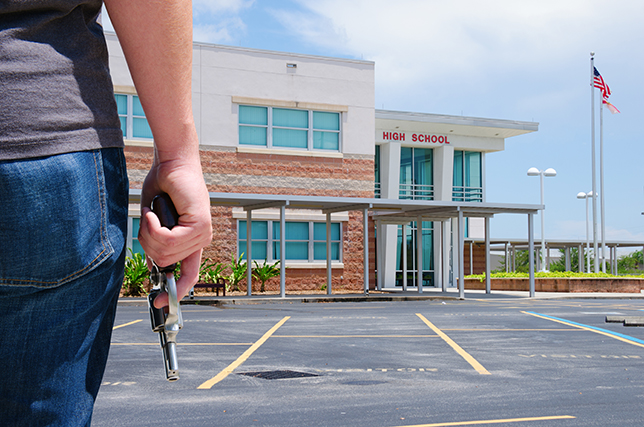
Galaxy Next Generation Solution Addresses Active Shooter Safety
- By Matt Jones
- October 12, 2021
A 2013 study from the Department of Homeland Security, “A Study of Active Shooter Incidents in the United States Between 2000 and 2013,” suggests that only 15% of active assailant events in schools occur outside of the school building. That figure, then, means that 85% of active shooter events in schools occur within the building, once the assailant has made it past external security. Security measures like access control and keycards focus on making sure that only people who belong in the building can get in. However, the unfortunate truth is that most active shooters in schools are people who do belong there.
In addition to preventing active shooter situations from occurring, it’s just as important to focus on how to manage them and minimize the damage once they’ve already begun. Incidents of gun violence in schools have been increasing year-over-year—with the notable exception of 2020, when the pandemic and lockdowns necessitated school closures. School re-openings in spring 2021 have once again brought the topic of violence in schools to a head.
Magen McGahee, co-founder and CFO of Galaxy Next Generation, outlined the three critical steps that school administrators should take during an active shooter event. The steps can be done in any order; however, when every second counts during an emergency, doing them quickly and confidently is crucial to saving the lives of everyone in the building.
The first of these is to create a safe haven for students. “Most of our statistics that we use in case studies, and to really understand what the need is, are all based on Department of Homeland Security and FBI facts,” said McGahee. “One example, of course, is with the classroom locks. Inside locks have proven to be probably the most effective way of keeping students safe in a school building.”
Creating a safe physical space is perhaps the simplest but most important step toward keeping students out of harm’s way. Many school security systems and infrastructures now allow for the possibility of remote locking: Administrators with the right credentials have the capability to lock any door in the building with the touch of a button from their personal device of choice.
The second step is internal communication, that is, alerting the building’s occupants of an emergency situation in progress as soon as possible. Schools previously used a bell or intercom system to make campus-wide announcements. However, as technology progresses, digital communication has become an invaluable tool in mass, instantaneous communication. Administrators can send a text message to any enrolled device in the building—a desktop, laptop, tablet, and so on—to provide an immediate but less panic-inducing visual alert indicating the need for a lockdown or other emergency procedures.
The final step in handling an active shooter event is external communication: notifying law enforcement and other first responders of an emergency situation. “The first responder issue has always kind of followed the school tragedies where we’ve heard, you know, in Sandy Hook, for example, all their reports show that it took 15–16 minutes for law enforcement to really arrive on scene and figure out what was going on,” McGahee said. “If you’re not in the action, you have no idea where they’re at in the school building, what’s happened, how many shots have been fired, and all of that.” Providing quick, accurate information to law enforcement can make all the difference, as McGahee estimates that most active shooter situations are over within five minutes.
These three pillars—creating a safe space, internal communication and external communication—are what McGahee summed up as the most important steps toward minimizing the damage of an active shooter situation, as supported by all available data. Galaxy Next Generation already has three products on the market that meet these needs. Its newest solution, G2 Secure, offers a one-touch safety and security solution that combines instant door-locking capabilities, emergency communication with first responders, and visual alerts in a single bundle.
“Providing a reliably secure teaching and learning environment is a priority for district leaders, and the solutions available should be held to the highest standards of modern technology,” said Gary LeCroy, Chief Executive Officer of Galaxy, in a press release. “Early adopters will not have to wait until G2 Secure is fully available to protect staff and students this back-to-school season. Those who implement the three products independently will be upgraded to the complete offering as soon as it’s ready.”
Galaxy partnered with HavenLock, Inc., to create a physical, hardware lock that can be initiated from anywhere and with IN FORCE911 to alert first responders and others needing to be kept in the loop. Combined with G2 Visual Alerts, which provides instant campus communication to students and staff by taking over the screen of any enrolled device, and controlled by the overarching G2 Communicator software, the three solutions provided by G2 Secure offer an all-in-one response to a crisis in progress.
All three solutions are currently available independently. G2 Secure, which integrates them, will be available during the second half of the 2021–22 academic year.